Power Court Stadium Overview
- Location: Power Court, Luton
- Coordinates: 51.879224°N, 0.407760°W
- Capacity: 25,000
- Public Transit: National Rail Luton
- Owner/Operator: Luton Town Football Club
- Architects: AECOM and AndArchitects
- Project Manager: Gary Sweet
- Opening Date: Planned for the 2027–28 season
Background
Power Court Stadium, located on the former site of Luton’s power station (closed in 1969), will replace the historic Kenilworth Road. The project is part of a mixed-use development that includes housing, a hotel, and a music venue.
Luton Town Football Club’s move from Kenilworth Road to a new 25,000-capacity stadium at Power Court is finally taking shape. This change is vital for the club’s future in the Premier League, and with approval from Luton Borough Council, the project is set to transform the area. The new stadium promises to provide the necessary facilities for top-flight football while also bringing economic growth to the town.
The Need for a New Stadium
Kenilworth Road has been Luton Town’s home since 1905, but it is no longer suitable for a Premier League club. The stadium’s location within residential streets limits expansion, and it does not meet the capacity or modern standards required for top-tier football.
Before the club’s promotion to the Premier League, Luton identified the need for a new stadium. The Power Court site, bought in 2016, offers the space and potential for a modern facility that aligns with the club’s ambitions and will support the town’s growth.
The Power Court Development & Design
The Power Court development will include a new stadium, hotel, and music venue, bringing energy to the heart of Luton. These plans were first proposed in 2019, and with the designs now approved in September 2024, work is set to begin. The stadium will feature uniquely sized stands inspired by Kenilworth Road and an innovative ‘halo’ floodlighting system shaped like a straw boater hat, referencing Luton’s hat-making heritage.
The stadium will seat 25,000 fans and maintain an intimate atmosphere, similar to Kenilworth Road. Its one and two-tiered seating will provide excellent sightlines for every fan. The stadium will have modern facilities that improve the matchday experience. It will also include a music venue that will provide year-round entertainment, benefiting both the club and the local economy. The adjacent hotel will provide accommodation for fans and visitors, adding to the town’s appeal.
Photos of luton new stadium
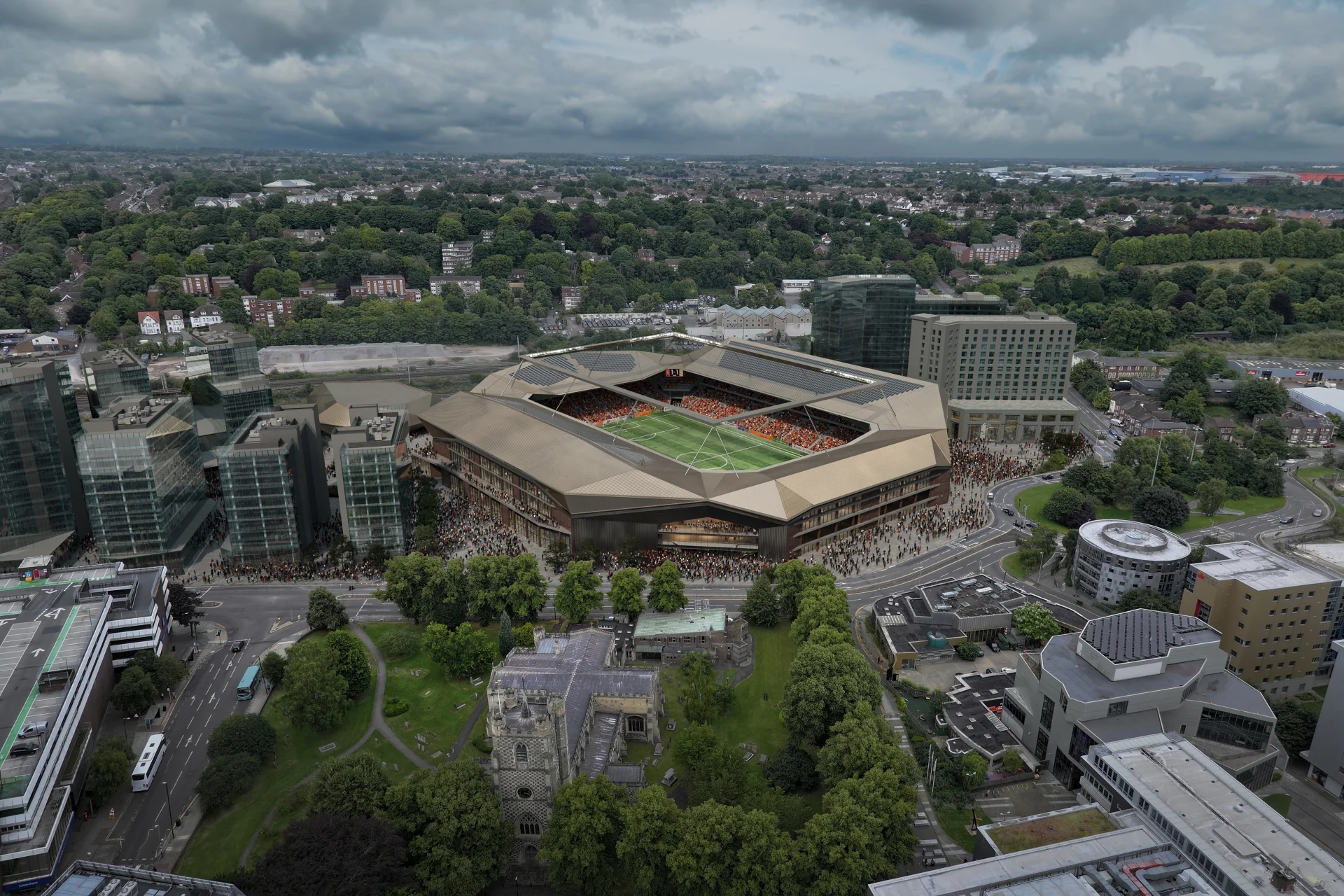
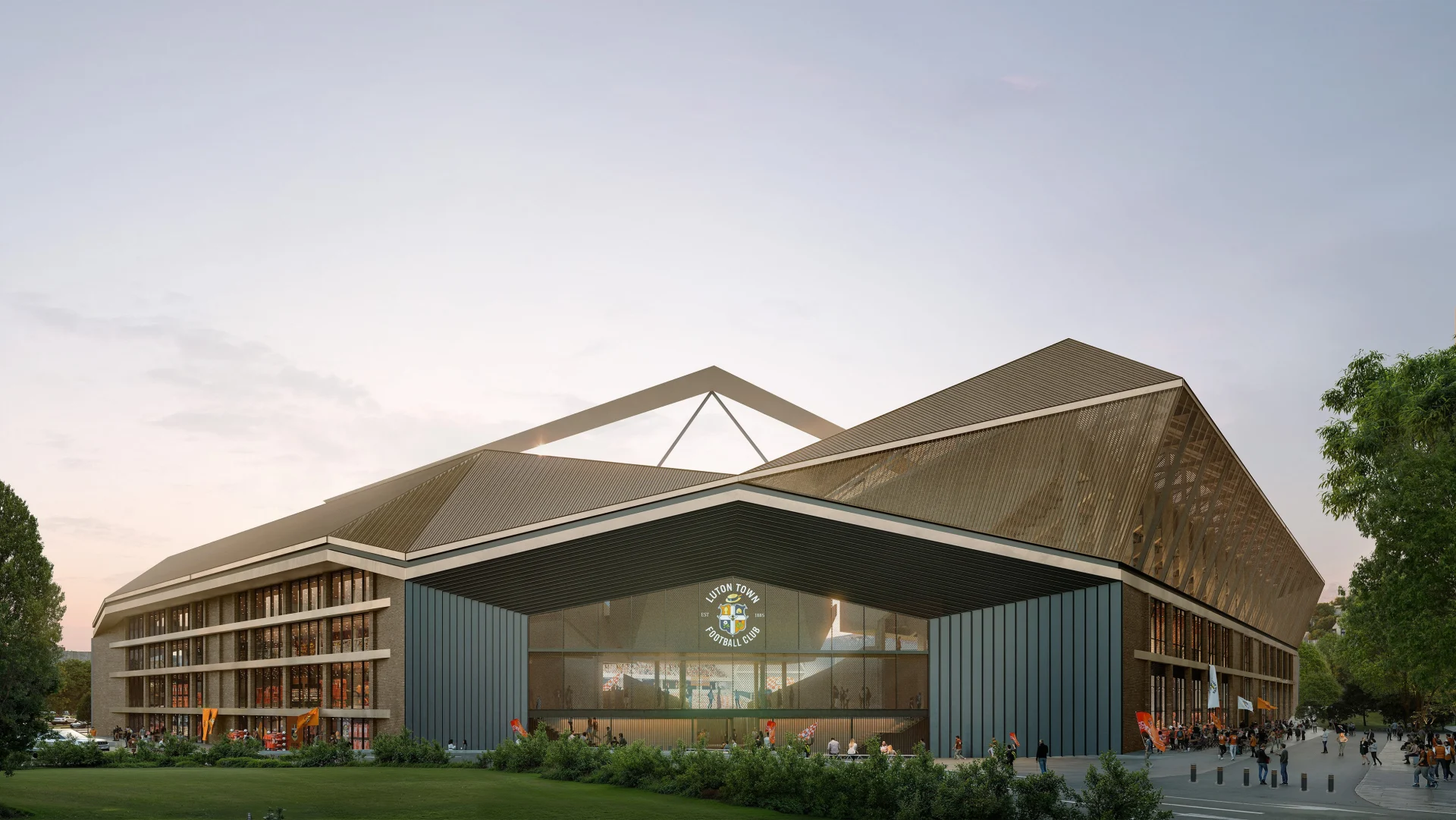
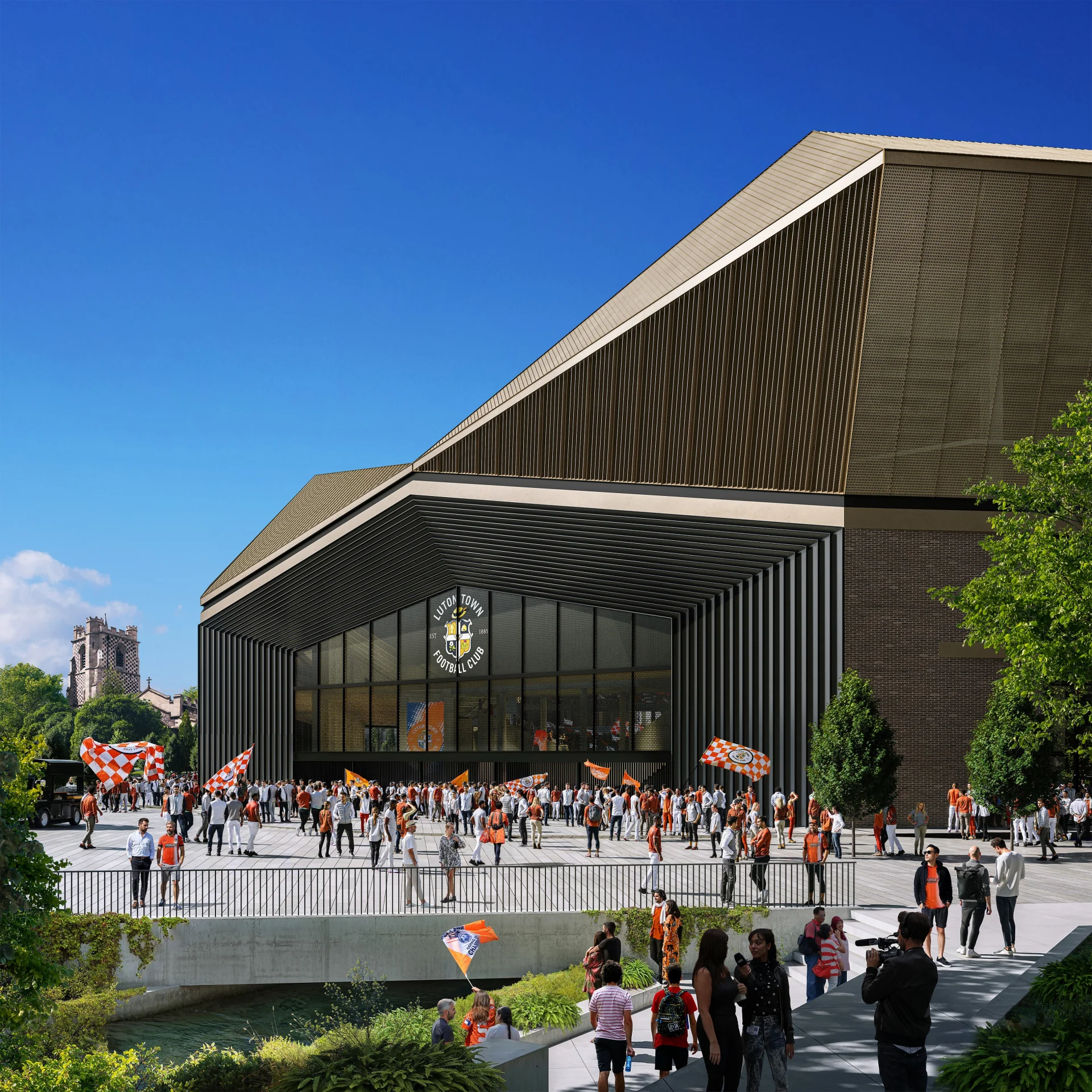
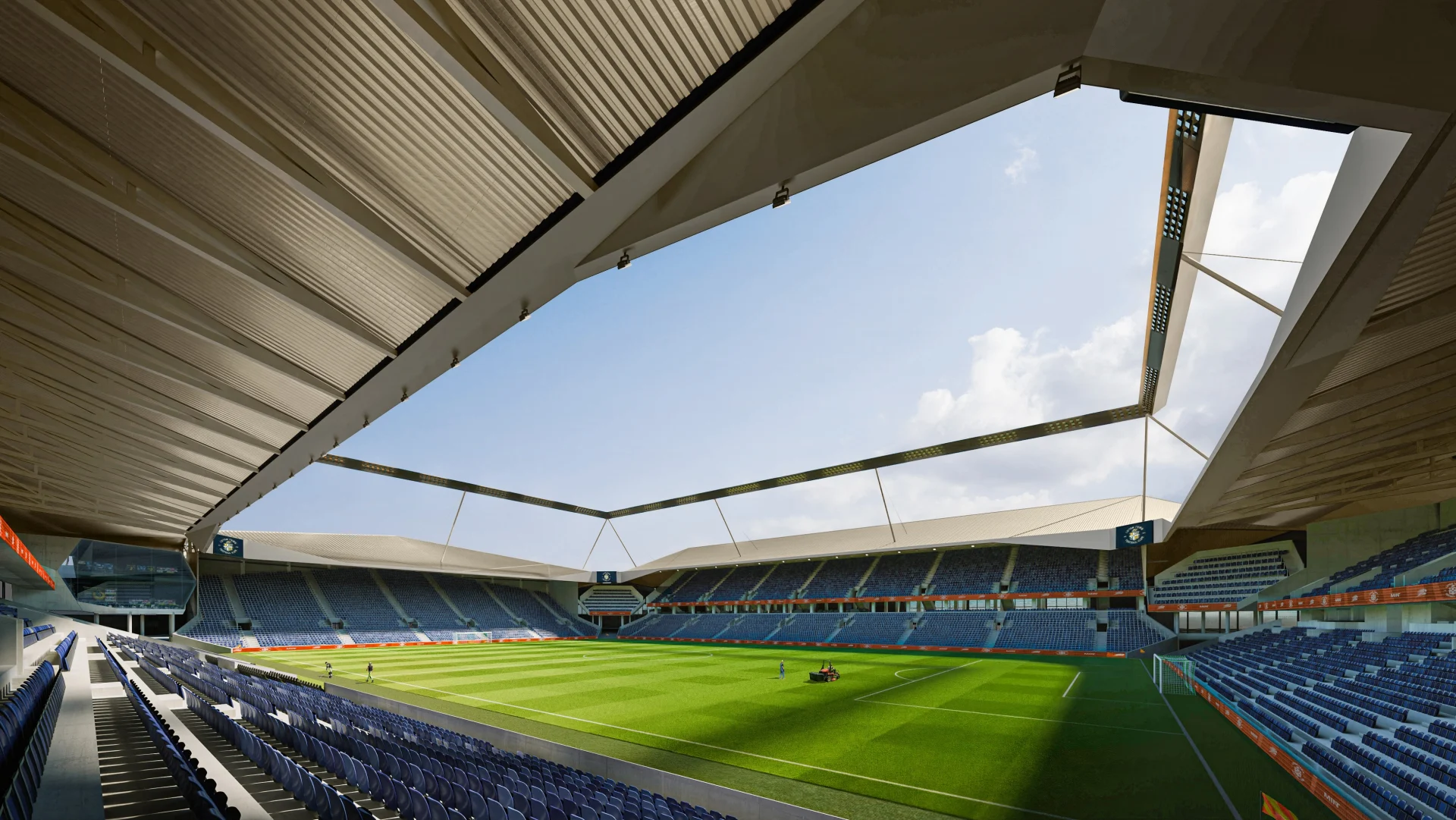
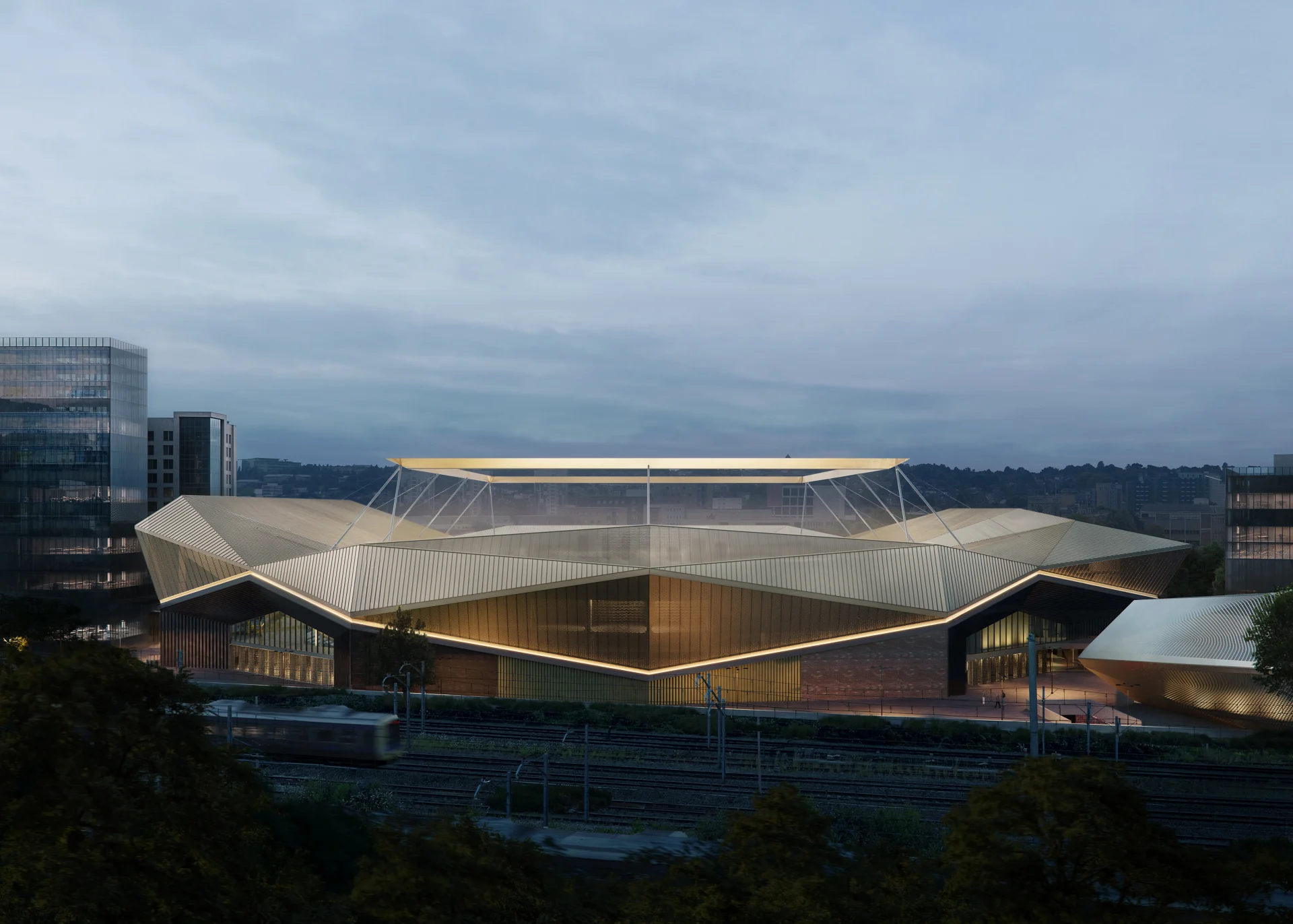
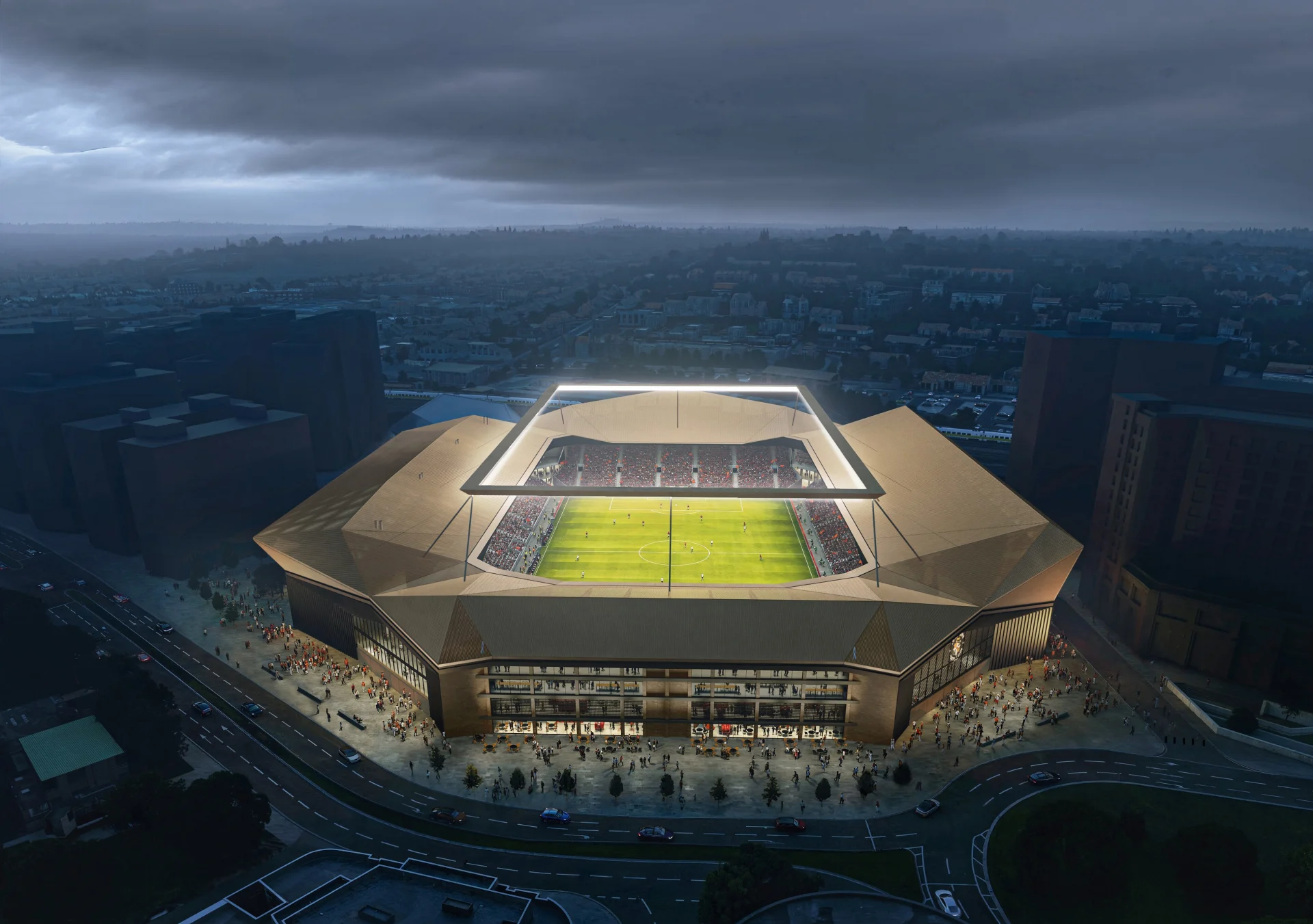

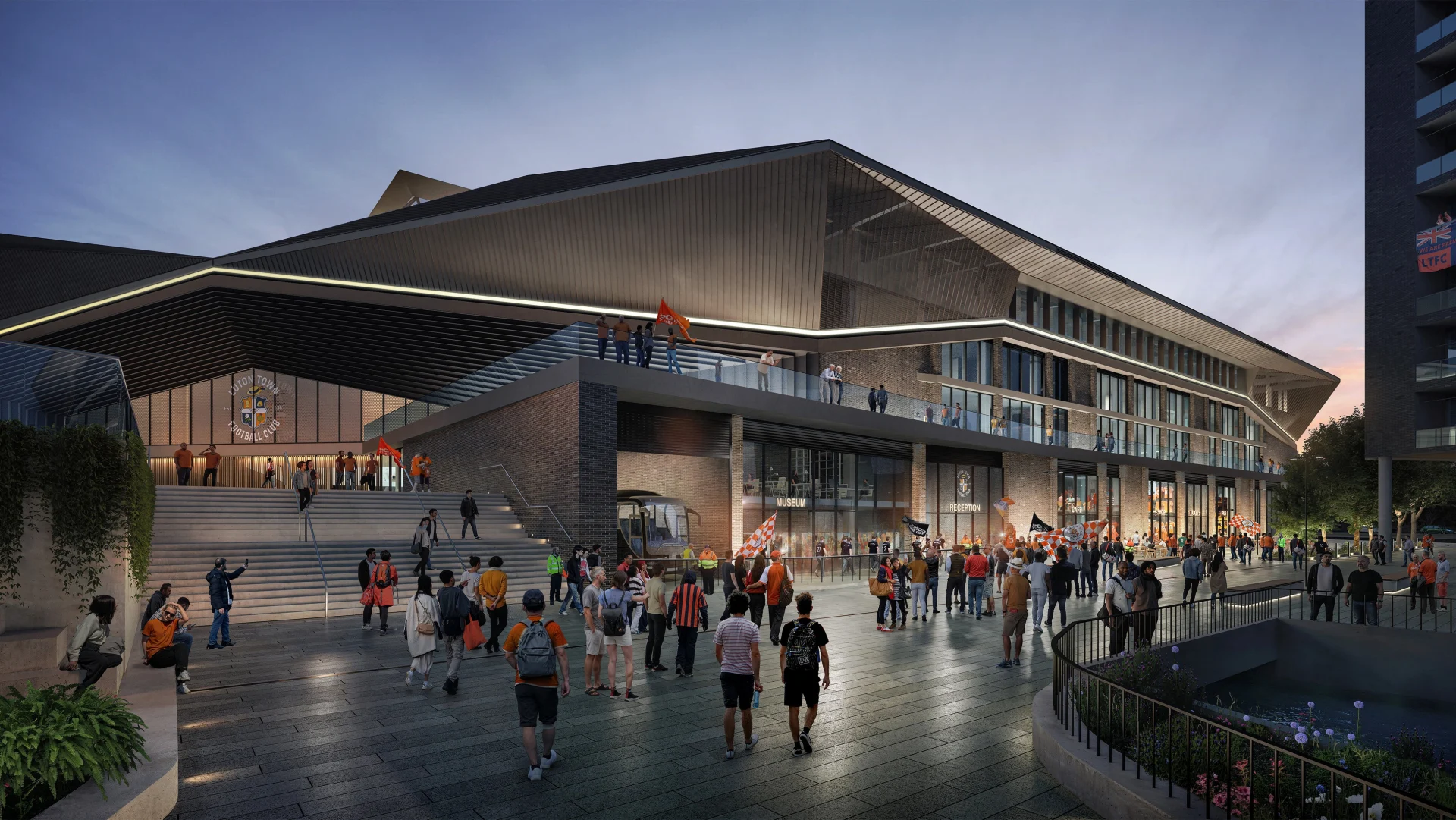
Luton Town New Stadium Cost
The Power Court Stadium project, estimated to cost £450 million, will transform the site of the former Luton power station into a 25,000-capacity football stadium and a mixed-use development, including housing, a hotel, and a music venue. Construction is planned for completion in 2027, making it the new home ground for Luton Town FC, replacing Kenilworth Road.
In preparation for their promotion to the Premier League, the club faced additional costs of £8-10 million for required improvements at Kenilworth Road. This included rebuilding one stand within three months to meet the Premier League’s broadcasting and facility requirements. Chief Executive Gary Sweet described this as a “gargantuan task,” exceeding even the challenges of starting the new stadium.
While the initial phase of the Power Court project included plans for a 23,000-seater stadium, revisions increased capacity to 25,000, with £100 million allocated for the early phases of construction. The stadium design also features innovative elements like a “halo” floodlighting system, inspired by the straw boater hats historically manufactured in Luton.
The project’s broader investment firmly positions the club within the Premier League infrastructure while revitalising the town centre.
Construction Timeline
Gary Sweet, Luton Town’s Chief Executive, has laid out the construction timeline. Initial work on diverting the River Lea and relocating a substation will begin soon, clearing the site for full construction. Stadium construction is expected to start in the second half of 2025, with a planned completion for 2027. However, there may be delays, with the stadium possibly opening in 2028.
The Design and Development Team
The design and construction of the stadium involves several key contributors:
- AECOM + SISA – Architects and designers, responsible for the overall layout and look of the stadium.
- Klaska and Trivandi – Supported the design process.
- AKT II – Structural engineering experts.
- Max Fordham – Mechanical, electrical, and sustainability consultants.
- WSP – Planning consultants.
- Atkins Realis – Cost consultancy and project management.
- KMC – Highways and transport consultants.
- Buro Happold – Crowd safety and pedestrian flow experts.
- Civic Engineers – Site civil engineering consultants.
- OFR – Fire safety consultants.
- Cotswold Archaeology – Archaeological advisors.
- JW Consultants – Ecology and biodiversity experts.
- AECOM Landscaping – Landscaping consultants.
- Pinsent Masons – Legal advisors.
- CMS – Commercial and contractor legal advisors.
Sustainability
The Power Court development will be environmentally sustainable. The stadium aims to achieve a BREEAM “Excellent” rating, which recognises buildings that meet high environmental standards. This commitment supports Luton Borough Council’s broader sustainability goals for 2040.
Regenerating the Local Area
The development will help regenerate Luton town centre. The stadium, hotel, music venue, and retail options will bring new business and job opportunities. Luton Borough Council has also approved plans for Newlands Park, a retail park near Junction 10 of the M1, which will fund the stadium and provide further economic benefits to the area.
Gary Sweet has made it clear that the Power Court development will benefit the town as well as the football club. The new stadium is a key part of Luton’s regeneration, offering long-term benefits to the local community.
The Road Ahead
With plans moving forward, Luton Town is set for a new era. The new stadium will provide the facilities the club needs to thrive in the Premier League and serve as a hub for community and economic growth. The development promises to be a significant step for both the club and the town. The next few years will shape the future of Luton Town Football Club and the wider community, with Power Court Stadium marking the beginning of an exciting chapter.
For further details, including planning history, visit official Luton Town FC resources and full plans of Luton Town Power Court Stadium development

Leave a Reply
You must be logged in to post a comment.